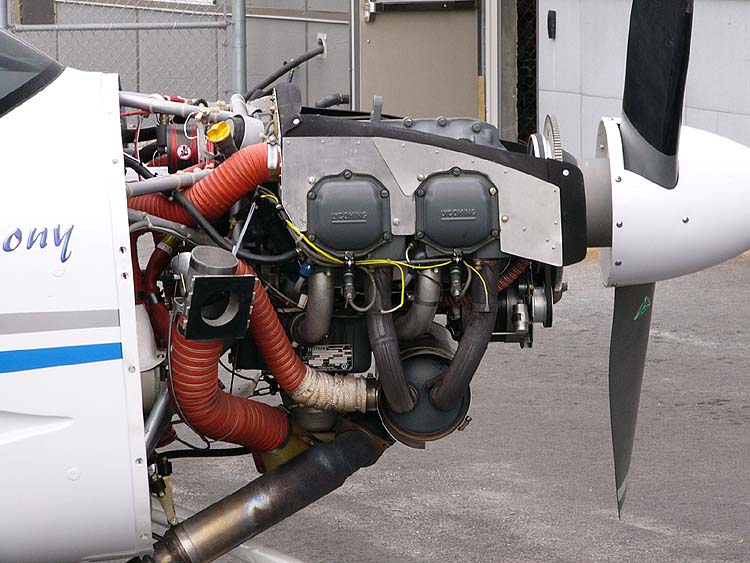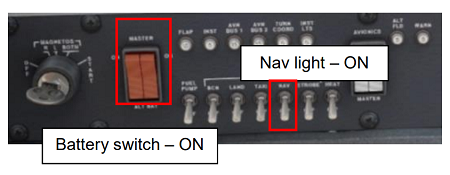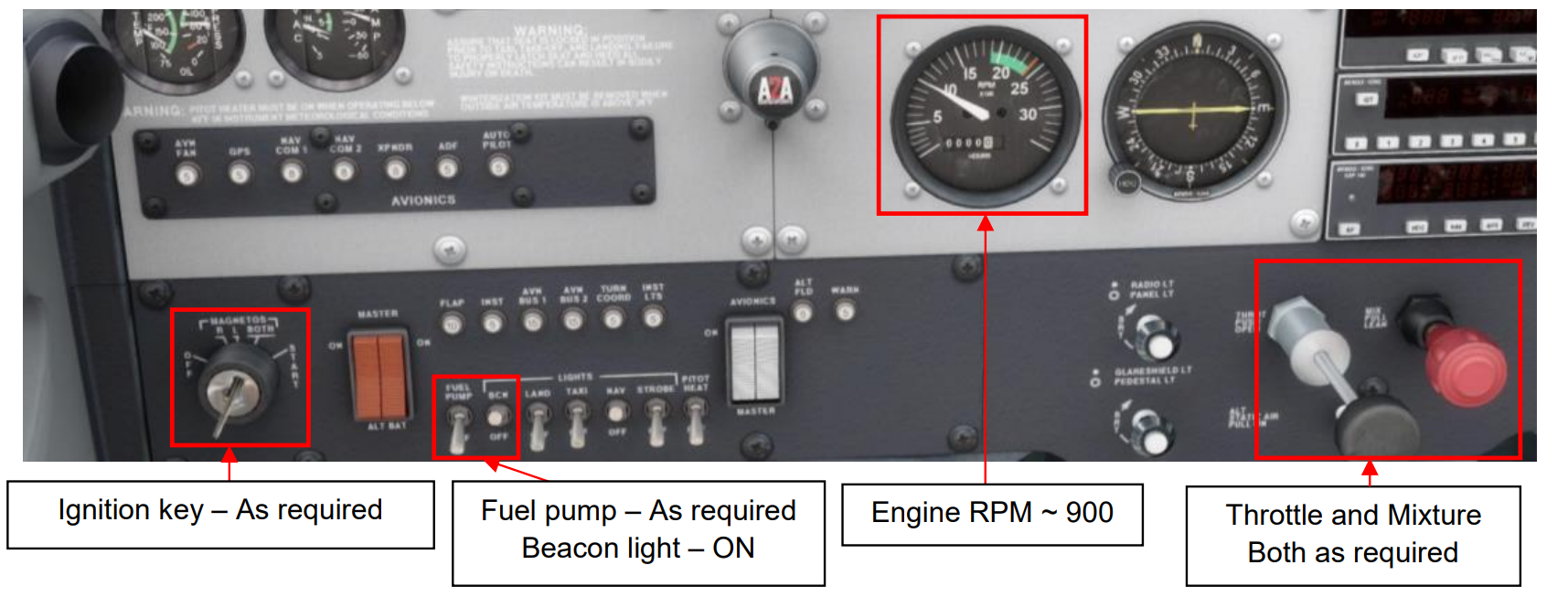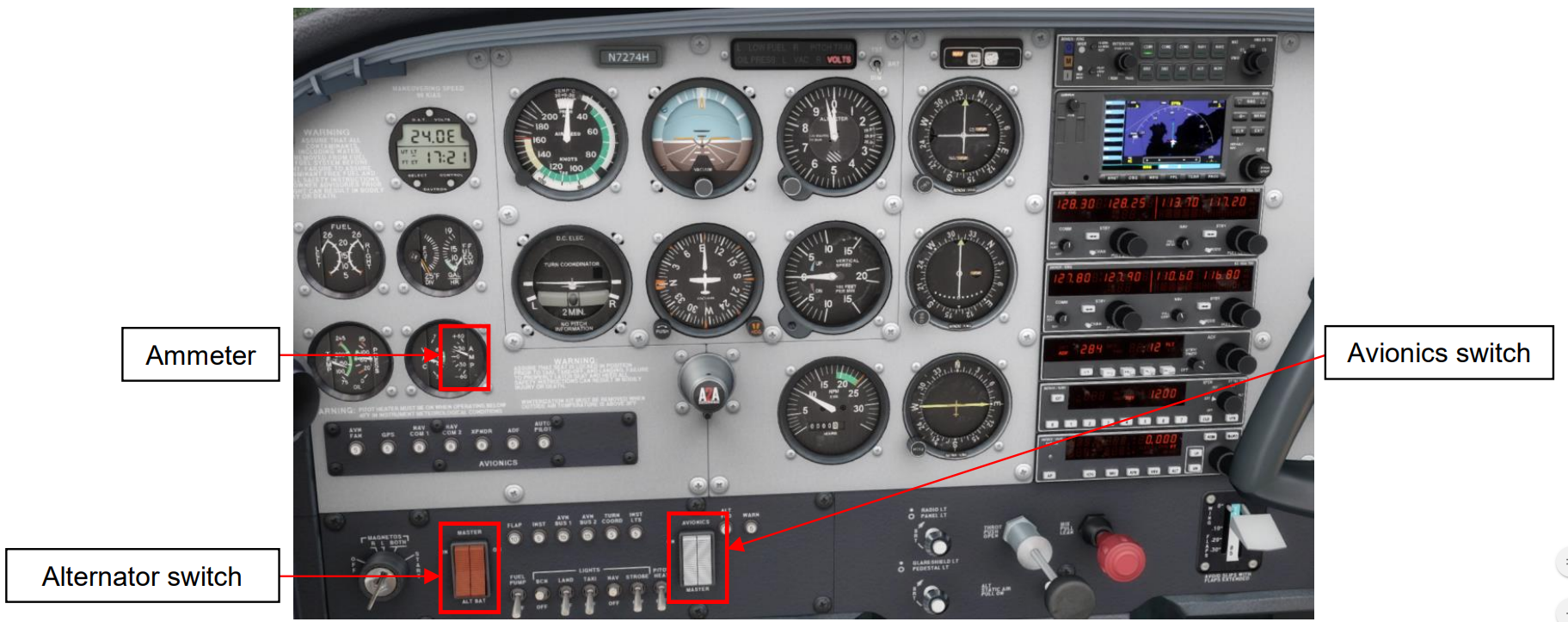¶ Theoretical Knowledge
To start the engine of a light general aviation piston aircraft we will specifically use the following sequence of actions:
⠀1. Turn on the battery switch
⠀2. Prime the engine by injecting fuel
⠀3. Use the ignition to set alight the fuel and properly start the engine
⠀4. Check both magnetos
⠀5. Check alternator load
An aircraft engine works like any engine: it is a mix of air and fuel that explodes to power a rotation axis that, in our case, is linked to a propeller allowing generating power. Power is the force created by the airflow on the blades of our propeller. Each blade is an airfoil which generates lift.

The inside of an aircraft piston engine
To ignite the detonating mix, we use magnetos which produce high voltage for engine spark plugs
¶ Starting the engine
Turn ON the battery switch.
For safety reasons, turn ON the navigation light to notify people around your aircraft that the battery is on.

The battery will provide power to energize the fuel pump in order to prime the engine and trigger the ignition.
Turn on your beacon light to inform people you will start your engine. Prime the engine:
- Turn on the fuel pump and set throttle lever to half level,
- Fully open mixture for 2-3 seconds and close mixture. Turn off fuel pump,
- Set throttle open at around 10-20%
Then, you shall do the following actions quickly:
- Turn the ignition key to the start position and when it sounds to start, fully open mixture
- When the engine sounds to run on its own, turn the ignition key to the both position
- Reduce throttle to set the engine at about 900rpm.

¶ After-start actions
Once our engine is running, we need to make sure it runs correctly
Since we are at the apron, in case of an incident, we need to make sure we are able to shutdown the engine securely. Also, since this area generally requires a low RPM level to avoid accidents, we will limit our test to the magnetos check. Further engine verification will be made at the holding point before takeoff, at high RPM.
Perform the check by following this procedure:
- Set RPM to 900
- Turn the magneto key in sequence to the following position: L – BOTH -- R -- BOTH

When running on a single magneto, do not allow more than 125 RPM drop. Also, the lowest value differential between the two magnetos must not exceed 50 RPM.
Finally, turn the key to the OFF position, let the engine RPM drop and quickly get back to the BOTH position before your engine dies
If there is no drop in RPM, engine shutdown must be initiated.

When our engine has been checked, it is now time to prepare our aircraft for the rest of the flight.
Protect your battery by turning on your alternator and verify that the ammeter is indicating a load.
Finally, light up your cockpit by turning on your avionics.

At this point you may set up your instruments according to your needs (altimeter, COM/NAV, GPS...)
- None
- VID 200696 - Creation
- VID 497664 & 496402 - Wiki.js integration